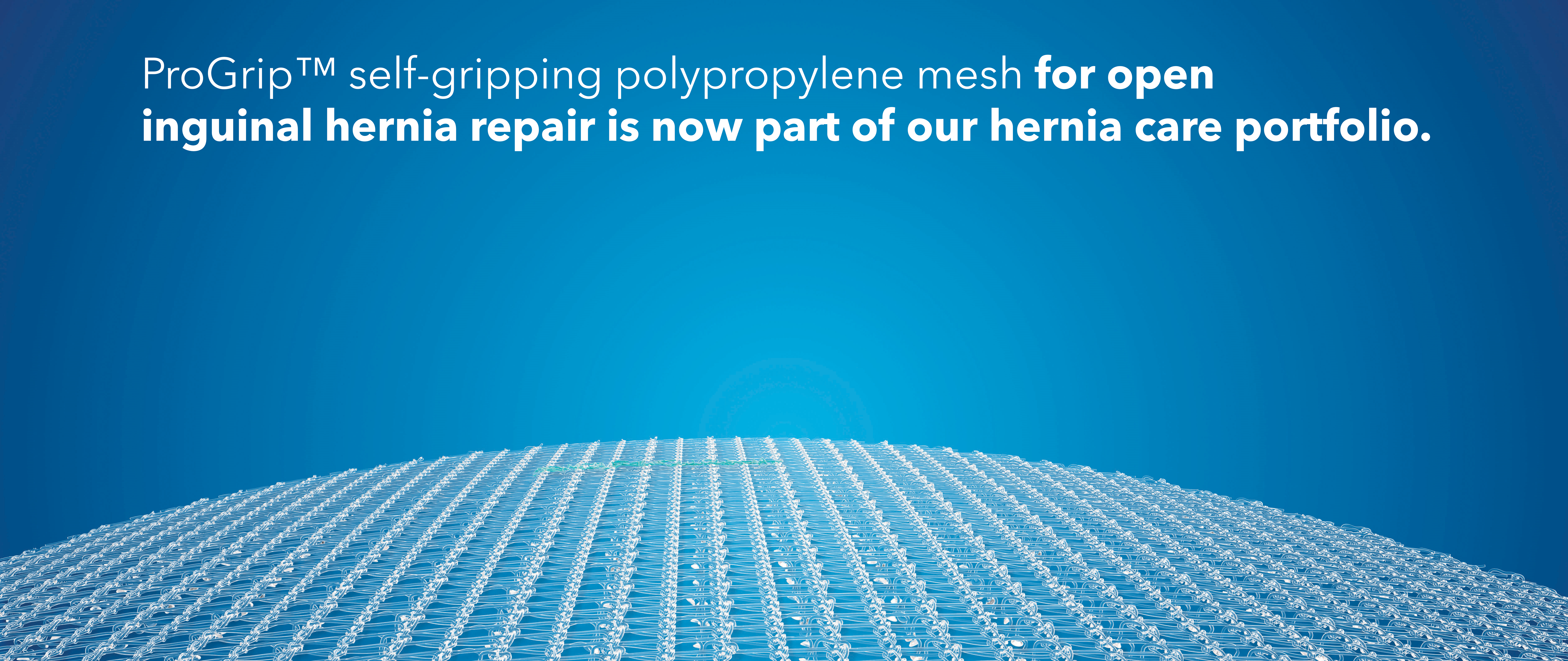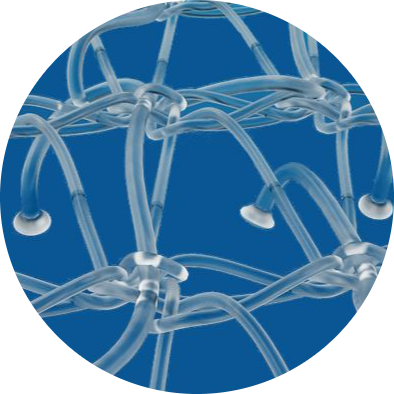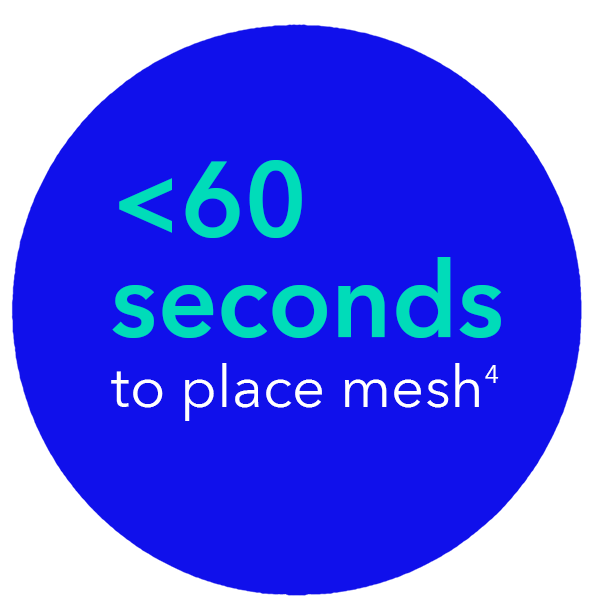Don't let material stand in your way.
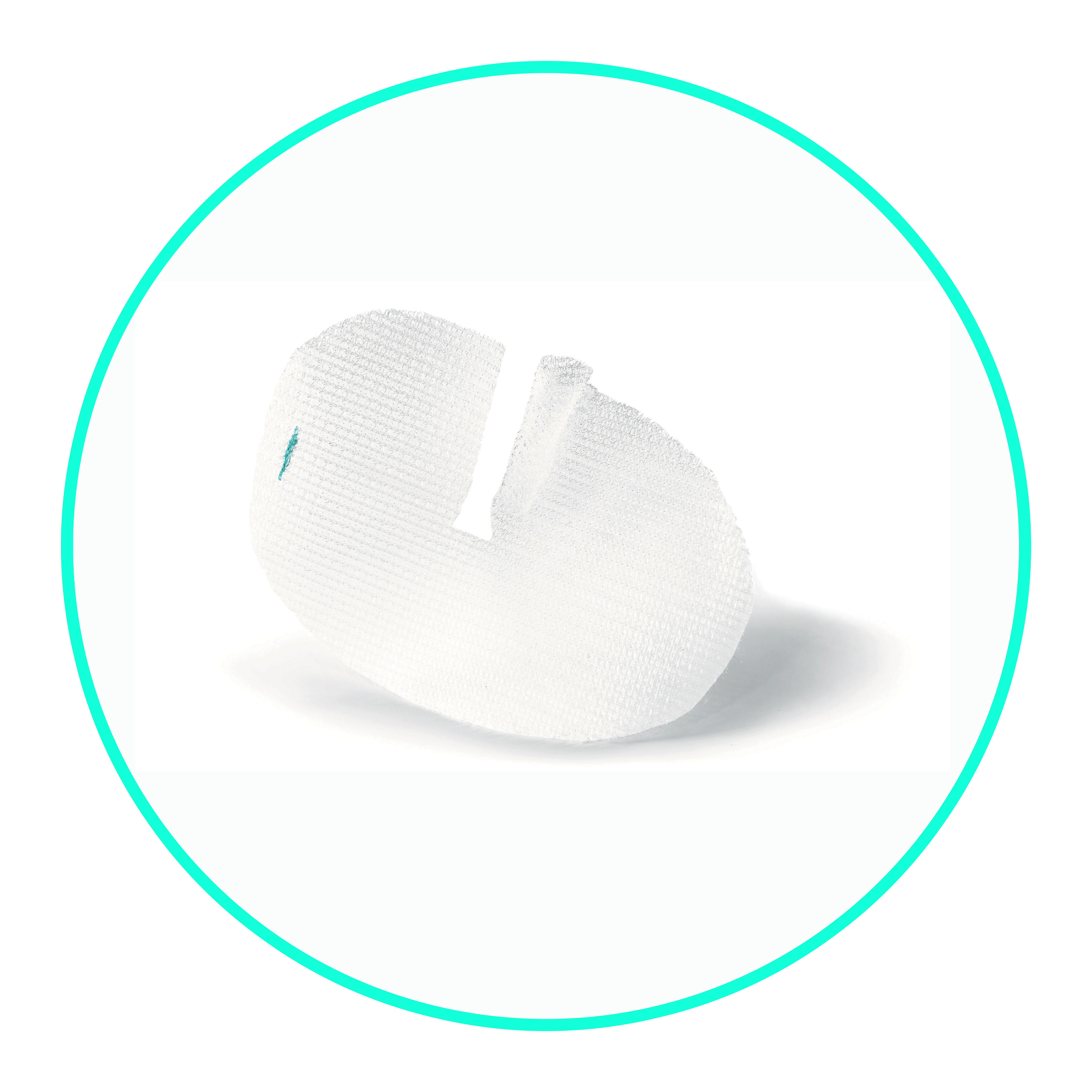
Whether you prefer polyester or polypropylene, ProGrip™ mesh is now available in the material you require for your patients.
Watch this video to see the difference.
Used, tested, and trusted globally1,2
The family of ProGrip™ meshes, created with our proprietary self anchoring technology, have earned the trust of surgeons worldwide through dozens of clinical studies1 and millions of procedural implants.2


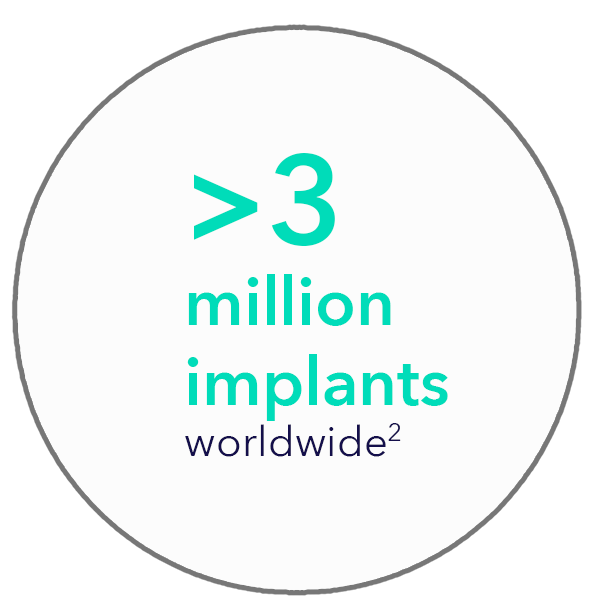
By incorporating ProGrip™ self-gripping
polypropylene mesh into your hernia repair routine, you and your patients can enjoy benefits that include tension-free fixation,3,4 less pain,4,6 reduced risk of tissue trauma,7 and precious minutes saved on each procedure.5,8,†,§
- Eliminate pain associated with traditional fixation4,6
- Reduce tissue trauma and risk of nerve entrapment or injury7
- Lower rates of recurrence4,5
We’re here to help
Ready to experience the difference ProGrip™ self-gripping polypropylene mesh can make in your open inguinal hernia repair procedures?
Our Medtronic representatives have the knowledge and resources to help you decide if ProGrip™ mesh is right for you and your patients.
Mesh complications may include but are not limited to acute and chronic pain, extrusion/erosion, hematoma, infection, inflammation, recurrence and/or seroma.
ProGrip™ self-gripping polypropylene mesh is not intended to be used for laparoscopic hernia repair.
Do not place the mesh in direct contact with the viscera. Direct contact with the viscera may lead to risks of adhesions, fistula formation, and bowel obstruction. Do not implant the mesh in an intra-peritoneal position. When implanting in a pre-peritoneal site, the mesh shall be placed with the grips towards the muscle fascia with the mesh completely covered with peritoneum.
†The technique used to anchor the mesh (suture) is left up to the surgeon. The textile’s self-gripping feature makes it possible to position the mesh without fixation, depending on the size of the defect, the hernia position, and the quality of the anatomical structures.
‡Based on benchtop data. Benchtop data are not necessarily indicative of human clinical outcomes.
§Compared to procedures using traditional fixation.
ΩIf a mesh is trimmed, special care should be taken to preserve the sewing to limit the risk of recurrence. The green marking should not be cut as it could detach from the base textile. Removal of the green marking could compromise its function.
1. Based on publication review for ProGrip™ mesh patient outcomes and surgical time outcomes. March 2018.
2. Based on an internal documentation of products manufactured in Trevoux by Sofradim Production. April 2021.
3. Anadol AZ, Akin M, Kurukahvecioglu O, et al. A prospective comparative study of the efficacy of conventional Lichtenstein versus self-adhesive mesh repair for inguinal hernia. Surg Today. 2011;41(11):1498–1503.
4. Chastan P. Tension free open inguinal hernia repair using an innovative self-gripping semi- resorbable mesh. Journal of Minimal Access Surgery. 2006;2(3):139–143.
5. Pierides G, Scheinin T, Remes V, et al. Randomized comparison of self-fixating and sutured mesh in open inguinal hernia repair. Br J Surg. 2012;99(5):630–636.
6. Jorgensen LN, Sommer T, Assaadzadeh S, et al. Randomized clinical trial of self-gripping mesh versus sutured mesh for Lichtenstein hernia repair. Br J Surg. 2013;100(4):474–481.
7. Quyn AJ, Weatherhead KM, Daniel T. Chronic pain after open inguinal hernia surgery: suture fixation versus self-adhesive mesh repair. Langenbecks Arch Surg. 2012;397(8):1215–1218.
8. Kapischke M., SchulzeH., Caliebe A. Self-fixating mesh for the Lichtenstein procedure — a prestudy. Arch Surg. 2010;395(4):317–322.
©2022 Medtronic. Medtronic, Medtronic logo, and Engineering the extraordinary are trademarks of Medtronic. All other brands are trademarks of a Medtronic company. 10/2022 – US-HR-2200098
